Similar presentations:
Beginning and ending
1. Beginning end ending
Lecture 6Melnik O.G.
SFedU
2. Why?
On the night of January 26, 1988, a conductor stepped to the podium at the Majestic Theatre inNew York City, tapped his baton, raised his arms, and signaled the orchestra to play. Moments
later, American theatergoers first heard the dramatic opening chords of The Phantom of the
Opera. Today, this scene has been repeated more than 8,500 times and Phantom has become the
longest-running musical in Broadway history.
Like most classic musicals, Phantom of the Opera begins with an overture— an orchestral
introduction that captures the audience's attention and gives them a preview of the music they are
going to hear. Without such an introduction—if the characters simply walked onstage and began
singing or speaking—the beginning of the play would seem too abrupt, and the audience would not
be suitably "primed" for the entertainment.
Similarly, most musicals end with a finale, when the whole cast is onstage, elements of the
dramatic plot are resolved, portions of the principal songs are recalled, and the music is brought to
a dramatic climax. If there were no such conclusion, if the actors merely stopped and walked
offstage, the audience would be left unsatisfied.
Just as musical plays need appropriate beginnings and endings, so do speeches. The beginning, or
introduction, prepares listeners for what is to come. The conclusion ties up the speech and alerts
listeners that the speech is going to end. Ideally, it is a satisfying conclusion.
3. The Introduction
The Introduction
First impressions are important. A poor beginning may so distract or alienate listeners that
the speaker can never fully recover. Moreover, getting off on the right foot is vital to a
speaker's self-confidence. What could be more encouraging than watching your listeners'
faces begin to register interest, attention, and pleasure? A good introduction, you will find,
is an excellent confidence booster.
In most speech situations, the introduction has four objectives:
• Get the attention and interest of your audience.
• Reveal the topic of your speech.
• Establish your credibility and goodwill.
• Preview the body of the speech.
the introduction is limited to 10-20 percent of the entire speech
4. I. GET ATTENTION AND INTEREST
I. GET ATTENTION AND INTEREST
"Unless a speaker can interest his audience at once, his effort will be a failure.“
If your topic is not one of extraordinary interest, your listeners are likely to say to
themselves, "So what? Who cares?" A speaker can quickly lose an audience if she or
he doesn't use the introduction to get their attention and quicken their interest.
Getting the initial attention of your audience is usually easy—even before you utter
a single word. After you are introduced and step to the lectern, youraudience will
normally give you their attention. If they don't, wait patiently. Look directly at the
audience without saying a word. In a few moments all talking and physical
commotion will stop. Your listeners will be attentive. You will be ready to start
speaking.
Keeping the attention of your audience once you start talking is more difficult.
5. 1. Relate the Topic to the Audience
People pay attention to things that affect them directly. If you can relate the topic to your
listeners, they are much more likely to be interested in it.
Suppose, for example, one of your classmates begins her speech like this:
Today I am going to talk about collecting postcards—a hobby that is both fascinating and
financially rewarding. I would like to explain the basic kinds of collectible postcards, why
they are so valuable, and how collectors buy and sell their cards.
This is certainly a clear introduction, but it is not one to get you hooked on the speech. Now
what if your classmate were to begin her speech this way—as one student actually did.
6. Example
• It's Saturday morning, and you are helping clean out your grandmother'sattic. After working a while, you stumble upon a trunk, open it, and discover
hundreds of old postcards. Thinking about getting to the football game on
time, you start tossing the cards into the trash can. Congratulations! You
have just thrown away a year's tuition.
7. 2. State the Importance of Your Topic
Presumably, you think your speech is important. Tell your audience why they should think
so too.
It is very hard to cuddle a fish. Fish won't roll over or fetch the morning paper. You won't
find them curling up on your lap, chasing a ball of string, or rescuing a child from a burning
building.
Yet despite these shortcomings, 300 million tropical fish have found their way into 15
million American homes. Each year $60 million of tropical fish are sold in the United States,
and they have earned a spot next to the all-American dog and the cuddly kitten in the
hearts of millions of people. Today I would like to explain how you can start a home
aquarium and discover the pleasures of owning tropical fish.
8. 3. Startle the Audience
• startle your listeners with an arresting or intriguing statement.• Here is how one student began her speech opposing the use of Native
American names for sports teams:
• In tonight's games, the San Antonio Spies are playing the New Jersey Japs,
while the Los Angeles Jews will take on the Minnesota Polacks.
• This technique is highly effective and easy to use. Just be sure the startling
introduction relates directly to the subject of your speech. If you choose a
strong opening simply for its shock value and then go on to talk about
something else, your audience will be confused and possibly annoyed.
9. 4. Arouse the Curiosity of the Audience
People are curious. One way to draw them into your speech is with a series of
statements that progressively whet their curiosity about the subject of the speech.
For example:
It is the most common chronic disease in the United States. Controllable but
incurable, it is a symptomless disease. You can have it for years and never know
until it kills you. Some 73 million Americans have this disease, and 300,000 will die
from it before the year is out. Odds are that five of us in this class have it.
What am I talking about? Not cancer. Not AIDS. Not heart disease. I am talking
about hypertension—high blood pressure.
10. 5. Question the Audience
Asking a rhetorical question is another way to get your listeners thinking about
your speech. Sometimes a single question will do:
How would you respond if a loved one was the victim of terrorism?
What would you think if you went to the doctor because you were ill and she told
you to watch The Simpsons as part of your treatment?
you may want to pose a series of questions, each of which draws the audience
deeper and deeper into the speech.
Have you ever spent a sleepless night studying for an exam? Can you remember
rushing to finish a term paper because you waited too long to start writing it? Do
you often feel overwhelmed by all the things you have to get done at school? At
work? At home? If so, you may be the victim of poor time management.
Fortunately, there are proven strategies you can follow to use your time more
effectively and to keep control of your life.
11. 6. Begin with a Quotation
Looking for a quotation to use in the introduction or conclusion of your speech?
Visit Yahoo Quotations
http://dir.yahoo.com/Reference/Quotations/
for a comprehensive roster of links to collected quotations on the Web.
Are you interested in reading introductions and conclusions from famous speeches
in world history? You can find them at The History Place: Great Speeches Collection
www.historyplace.com/speeches/previous.html
12. Example
You might choose your quotation from Shakespeare or Confucius, from the Bible or
Talmud, from a poem, song, or film. Here is how one student used a quotation to
begin a speech about scientist Jonas Salk, who developed the first polio vaccine:
"If one is lucky, a solitary fantasy can totally transform one million realities." These
words from poet and writer Maya Angelou could apply easily to the dedicated
researcher Jonas Salk, who created a vaccine for polio. A half century ago this
crippling disease struck indiscriminately, but today widespread use of the vaccine
has virtually wiped out polio. In my talk I would like to describe how Salk
persevered and triumphed in his quest despite doubts and major setbacks.
13. 7. Tell a Story
We all enjoy stories—especially if they are provocative, amusing, dramatic, or suspenseful.
Consider, for example, the story one student told to open his speech about America's
crumbling bridges:
Gary Babineau thought he was dead. It was August 1, 2007, and he had just driven his blue
Chevy truck onto the I-35 West bridge in Minneapolis when the 30-year-old structure began
collapsing. "I heard a rumbling, like a jackhammer," he said later, "and then it completely
gave way." His pickup plummeted 35 feet, landing upside down, the bed severed from the
cab. Miraculously, Babineau, who was wearing his seat belt, survived, but others were not
so lucky. Thirteen people died that day; more than a hundred were injured.
The collapse of the I-35 bridge in Minneapolis was a tragedy, but it will not be the last one.
There are 79,000 bridges across the country rated as "structurally deficient" by the Federal
Highway Administration. These bridges carry 300 million vehicles a day, and one can only
wonder which will be the next to go.
You can also use stories based on your personal experience.
14. Other methods
• include referring to the occasion,• inviting audience participation,
• using audio equipment or visual aids,
• relating to a previous speaker,
• beginning with humor.
• Can you think of any examples?
15. II. REVEAL THE TOPIC
In the process of gaining attention, be sure to state clearly the topic of your speech. If you
do not, your listeners will be confused.
So you will know what to avoid, here is such an introduction, presented in a public speaking
class:
Imagine taking a leisurely boat ride along a peaceful waterway. The sun is high in the sky,
reflecting brightly off the ripples around you. The banks are lush with mangrove and
cypress trees. You see a stately pelican resting on a low-lying branch. You grab your camera,
snap a shot, and check the result. The picture is perfect. But will it be perfect in the future?
That is the question I want to explore today.
What is the topic of this speech? Nature photography? No. Birding? No. Tourism in the
tropics? No.
16. Suppose, instead, she had begun her speech differently:
• Alligators, panthers, otters, brown pelicans—these and other creatures havelost 50 percent of their habitat in south Florida over the past few decades.
Now, however, there is an $8 billion program to preserve their home in the
Florida Everglades. The largest restoration effort in the history of the world,
it will rejuvenate one of America's most diverse ecosystems and protect it
for future generations.
• The student was talking about efforts to restore the natural beauty of the
Florida Everglades.
17. ESTABLISH CREDIBILITY
ESTABLISH CREDIBILITY
Credibility is mostly a matter of being of being perceived as qualified by your listeners.
Here is how one student established her credibility on the subject of weight lifting without
sounding like a braggart:
What is the fastest-growing sport today among American women? If you answered weight
lifting, you are absolutely correct. Once seen as an exclusively male activity, weight lifting
has crossed the gender barrier—and with good reason. Regardless of whether you are male
or female, weight lifting can give you a sense of strength and power, enhance your selfesteem, and make you look and feel better.
I started lifting weights when I was in high school, and I have kept at it for the past eight
years. I have also taught weight lifting in several health clubs, and I am a certified instructor
through the Aerobics and Fitness Association of America.
Using some of my experience, I would like to explain the basic kinds of weights and how to
use them properly.
18. ESTABLISH GOODWILL
ESTABLISH GOODWILL
Much more challenging. Suppose you advocate a highly unpopular position.
The development of new nuclear power plants in the United States came to a
standstill during the 1980s. Yet, as Discover magazine stated just last month, the
time has come to look again at the benefits of nuclear power. Unlike fossil fuels, it
does not contribute to global warming; it does not leave America at the mercy of
foreign oil; and, with advances in technology, it is much safer than before.
That's why I'm speaking in favor of building more nuclear power plants to meet our
future energy needs. I know most of you oppose nuclear power—I did, too, until I
started researching this speech. Today I'd like to share with you some of the facts I
have found. I know I can't persuade all of you. But I do ask you to listen with an
open mind and to consider the merit of my arguments.
19. PREVIEW THE BODY OF THE SPEECH
• most people are poor listeners. One way to help your listeners is to tell themin the introduction what they should listen for in the rest of the speech.
• Today I will share part of what I have learned by explaining what happens
when you receive an acupuncture treatment, how acupuncture works, the
kinds of medical conditions that can be treated with acupuncture, and the
growing use of acupuncture in combination with Western medical
techniques.
20. another purpose of preview
• Because they usually come at the very end of the introduction, they providea smooth lead-in to the body of the speech.
• You can use your introduction to give specialized information—definitions or
background—that your listeners will need if they are to understand the rest
of the speech, as in the following example:
• A triathlon is a race made up of three different events completed in
succession. The events are usually swimming, biking, and running, though
canoeing is sometimes substituted for one of these.
21. The Miracle of Bone Marrow Transplants
commentaryThe speaker uses a story to gain
attention. This story works particularly
well because it is richly detailed and is
high in human interest.
Now the speaker reveals her topic.
Calling bone marrow transplants a
"medical miracle" reinforces the
importance of the subject, while
explaining her personal involvement
shows the speaker's goodwill and helps
establish her credibility.
introduction
Katy Hubbell was four years old when she was diagnosed with a
severe case of aplastic anemia, a disease in which the bone marrow
stops producing new blood cells. After several types of treatment
failed, Katy underwent a bone marrow transplant. Her donor was a
40-year-old airline manager who lived thousands of miles away. His
generosity saved the life of a little girl he had never met. Today Katy
is an active preteen girl who loves Harry Potter books and wants to
be a cheerleader.
Bone marrow transplants have been called a medical miracle
because of their lifesaving capability. 1 first became interested in the
subject when a 12-year-old member of my church was diagnosed
with leukemia. I joined a committee to publicize Greg's case and to
seek potential donors. Eventually a suitable donor was found and
Greg is now a healthy high- school sophomore.
22.
Because of Greg's illness, I learned that anyone can getHere the speaker relates the topic directly
sick and need a bone marrow donation. It could be any of
to her audience and shows why they
us in this room, a close friend, or even a family member. An
should care about it. The combination of
estimated 15,000 bone marrow transplants are performed
statistics with the quotation from the Food
in the U.S. each year. According to the U.S. Food and Drug
and Drug Administration reinforces the
Administration, these transplants give patients "a chance to
importance of the topic.
beat diseases once believed to have no cure."
Through my research for this speech, I have learned
By mentioning her research, the speaker
much more about this remarkable procedure. Today I
further bolsters her credibility. She then
would like to talk with you about bone marrow donation—
ends the introduction by previewing the
how simple a process it is for the donor, how absolutely
main points to be discussed in the body of
vital it is for the recipient, and how donors and recipients
the speech.
find one another.
23. TIPS FOR PREPARING THE INTRODUCTION
1.Keep the introduction relatively brief. Under normal circumstances it should not constitute more than 10
to 20 percent of your speech.
2.Be on the lookout for possible introductory materials as you do your research. File them with your notes
so they will be handy when you are ready for them.
3.Be creative in devising your introduction. Experiment with two or three different openings and choose
the one that seems most likely to get the audience interested in your speech.
4.Don't worry about the exact wording of your introduction until you have finished preparing the body of
the speech. After you have determined your main points, it will be much easier to make final decisions
about how to begin the speech.
5.Work out your introduction in detail. Some teachers recommend that you write it out word for word;
others prefer that you outline it. Whichever method you use, practice the introduction over and over until
you can deliver it smoothly from a minimum of notes and with strong eye contact. This will get your speech
off to a good start and give you a big boost of confidence.
24. The Conclusion "Great is the art of beginning, but greater the art is of ending.“ Longfellow
The Conclusion"Great is the art of beginning, but greater the art is
of ending.“ Longfellow
• 2 functions:
• signal the ending
• REINFORCE THE CENTRAL IDEA
25. SIGNAL THE END OF THE SPEECH
sometimes the speaker concludes so abruptly that you are taken by surprise.
How do you let an audience know your speech is ending?
"In conclusion," "My purpose has been," "Let me end by saying"—these are all brief
cues that you are getting ready to stop.
by your manner of delivery. The conclusion is the climax of a speech. By use of the
voice—its tone, pacing, intonation, and rhythm—a speaker can build the
momentum of a speech so there is no doubt when it is over.
One method of doing this has been likened to a musical crescendo. As in a
symphony in which one instrument after another joins in until the entire orchestra
is playing, the speech builds in force until it reaches a zenith of power and intensity.
26. A superb example Martin Luther King's "I've Been to the Mountaintop"
A superb exampleMartin Luther King's
"I've Been to the Mountaintop"
the speech he delivered the night before he was assassinated in April 1968.
Speaking to an audience of 2,000 people in Memphis, Tennessee, he ended his
speech with a stirring declaration that the civil rights movement would succeed
despite the many threats on his life:
Like anybody, I would like to live a long life. Longevity has its place, but I'm not
concerned about that now. I just want to do God's will, and he's allowed me to go
up to the mountain, and I've looked over and I've seen the Promised Land. I may
not get there with you, but I want you to know tonight that we as a people will get
to the Promised Land. So I'm happy tonight. I'm not worried about anything; I'm
not fearing any man. Mine eyes have seen the glory of the coming of the Lord.
27. Another effective method
• the dissolve ending of a concert song that evokes deep emotions: "The songseems to fade away while the light on the singer shrinks gradually to a
smaller and smaller circle until it lights only the face, then the eyes. Finally,
it is a pinpoint, and disappears with the last note of the song."
28. General Douglas MacArthur's moving farewell to the cadets at the U.S. Military Academy:
• In my dreams I hear again the crash of guns, the rattle of musketry, thestrange, mournful mutter of the battlefield. But in the evening of my
memory always I come back to West Point. Always there echoes and reechoes: duty, honor, country.
• Today marks my final roll call with you. But I want you to know that when I
cross the river, my last conscious thoughts will be of the Corps, and the
Corps, and the Corps.
• I bid you farewell.
29. Summarize Your Speech
Restating the main points is the easiest way to end a speech. One student used this technique effectively in
his persuasive speech about the AIDS epidemic in Africa:
In conclusion, we have seen that the AIDS epidemic is having a devastating effect on African society. An
entire adult generation is slowly being wiped out. An entirely new generation of AIDS orphans is being
created. Governments in the nations most afflicted have neither the resources nor the expertise to counter
the epidemic. Many African economies are being crippled by the loss of people in the workplace.
Before it's too late, the United Nations and developed countries need to increase their efforts to halt the
epidemic and bring it under control. The lives and well-being of tens of millions of people hang in the
balance.
The value of a summary is that it explicitly restates the central idea and main points one last time. But as we
shall see, there are more imaginative and compelling ways to end a speech. They can be used in
combination with a summary or, at times, in place of it.
30. End with a Quotation
A quotation is one of the most common and effective devices to conclude a speech. Here is
a fine example, from a speech on the misuse of television advertisements in political
campaigns:
We cannot ignore the evils of television commercials in which candidates for the highest
offices are sold to the voters in 30-second spots. These ads cheapen the elective process
and degrade our political institutions. In the words of historian Arthur Schlesinger, Jr., "You
cannot merchandise candidates like soap and hope to preserve a rational democracy."
The closing quotation is particularly good because its urgency is exactly suited to the
speech. When you run across a hrief quotation that so perfectly captures your central idea,
keep it in mind as a possible conclusion.
31. Make a Dramatic Statement
you may want to devise your own dramatic statement.
Patrick Henry's legendary "Liberty or Death" oration. Henry uttered this speech on March 23, 1775, as he
exhorted his audience to resist British tyranny:
Is life so dear, or peace so sweet, as to be purchased at the price of chains and slavery? Forbid it, Almighty
God! I know not what course others may take; but as for me, give me liberty, or give me death.
example, from a speech on suicide prevention. Throughout the speech, the student referred to a friend who
had tried to commit suicide the previous year. Then, in the conclusion, she said:
My friend is back in school, participating in activities she never did before—and enjoying it. I'm happy and
proud to say that she's still fighting for her life and even happier that she failed to kill herself. Otherwise, I
wouldn't be here today trying to help you. You see, I am my "friend," and I'm more than glad to say I've
made it.
As you can imagine, the audience was stunned. The closing lines brought the speech to a dramatic
conclusion. The speaker made it even more effective by pausing just a moment before the last words and
by using her voice to give them just the right inflection.
32. Refer to the Introduction
Refer
to
the
Introduction
Here is how one student used the method in her speech about the Special Olympics:
Introduction: In Seattle, nine young athletes assembled at the starting line for the 100- yard dash. At the gun, they all
started off—not exactly in a dash, but with a desire to run the race to the finish and win. All except one little boy who
stumbled on the asphalt, tumbled over a couple of times, and began to cry. The other runners heard the boy cry.
They stopped; they looked back. Then they all went back to the boy's side—every single one of them. One girl with
Down syndrome kissed him and said, "This will make it better." Then all nine linked arms and walked to the finish
line—together.
These athletes were not competing on national television; they were not sponsored or idolized. But they were given
an opportunity to flourish under the glow of their own spotlights, to feel the brush of the ribbon cross their chests as
they ran through their own finish line in their own Olympics—the Special Olympics.
In the body of her speech, the student explained the Special Olympics and called on members of the audience to
become volunteers. Then, in her closing words, she tied the whole speech together by returning to the story
described in her introduction:
Conclusion: Remember the nine children I mentioned at the beginning of this speech.
Think of their happiness and their support for one another. Think of how much they gained from running in that race.
And think how you can help others experience the same benefits as they strive to fulfill the motto of the Special
Olympics: "Let me win. But if I can't win, let me be brave in the attempt."
33. SAMPLE CONCLUSION WITH COMMENTARY
• How do you fit these methods together to make a conclusion? Here is anexample, from the speech about bone marrow transplants whose
introduction we looked at earlier
34. TIPS FOR PREPARING THE CONCLUSION
1.
As with the introduction, keep an eye out for possible concluding materials as
you research and develop the speech.
2. Conclude with a bang, not a whimper. Be creative in devising a conclusion
that hits the hearts and minds of your audience. Work on several possible endings,
and select the one that seems likely to have the greatest impact.
3.
Don't be long-winded. The conclusion will normally make up no more than 5
to 10 percent of your speech.
4. Don't leave anything in your conclusion to chance. Work it out in detail, and
give yourself plenty of time to practice delivering it. Many students like to write out
the conclusion word for word to guarantee it is just right. If you do this, make sure
you can present it smoothly, confidently, and with feeling—without relying on your
notes or sounding wooden. Make your last impression as forceful and as favorable
as you can.
35. REVIEW QUESTIONS
REVIEW QUESTIONS
1.
What are four objectives of a speech introduction?
2.
What are seven methods you can use in the introduction to get the attention and
interest of your audience?
3.
Why is it important to establish your credibility at the beginning of your speech?
4.
What is a preview statement? Why should you nearly always include a preview
statement in the introduction of your speech?
5.
What are five tips for preparing your introduction?
6.
What are the major functions of a speech conclusion?
7.
What are two ways you can signal the end of your speech?
8.
What are four ways to reinforce the central idea when concluding your speech?
9.
What are four tips for preparing your conclusion?
36. Exercises
• 1.Exercises
Here are six speech topics. Explain how you might relate each to your
classmates in the introduction of a speech.
Social Security
laughter illiteracy
steroids soap operas blood donation
• 2.
Think of a speech topic. Create an introduction for a speech dealing
with any aspect of the topic you wish. In your introduction be sure to gain
the attention of the audience, to reveal the topic and relate it to the
audience, to establish your credibility, and to preview the body of the
speech.
• 3.
Using the same topic as in Exercise 2, create a speech conclusion. Be
sure to let your audience know the speech is ending, to reinforce the central
idea, and to make the conclusion vivid and memorable.
37. Home assignment
Home assignment
Your degree in civil engineering has served you well and you are now the chief city planner for a
major metropolis. After studying the issue for more than a year, you and the planning
commission have decided that the best way to relieve the city's growing traffic congestion is to
build a new downtown freeway. Unfortunately, there is no way to build the freeway without
knocking down a number of houses and businesses. You are not happy about this, and you know
it will create difficulty for the people affected, but your research and computer simulations show
that it is by far the most effective long-range option for improving the city's traffic flow.
Not surprisingly, the neighborhood association that represents the area through which you plan
to build the freeway has expressed a number of concerns about the proposal. Because of your
excellent public speaking skills, you have been chosen to represent the city at a meeting of the
neighborhood association. Your job at the meeting will be to address the audience's concerns
and provide a convincing explanation of the city's decision to build the freeway. You know that if
your speech is to be persuasive, you must use the introduction to establish your credibility and
goodwill so your listeners will be willing to listen receptively to what you say in the body.
Write a draft of your introduction. In it be sure to address all four functions of a speech
introduction discussed in this lecture.





















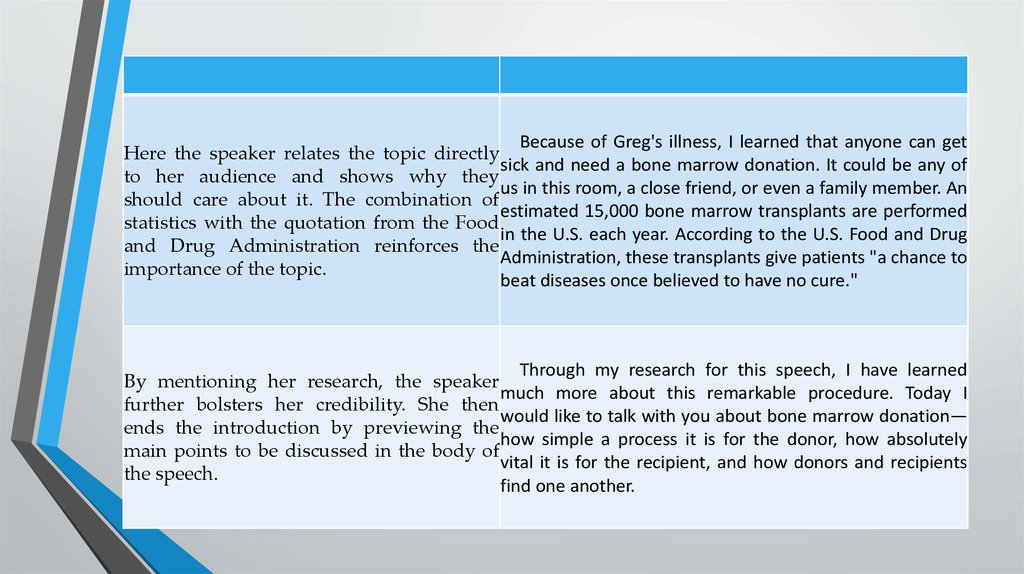
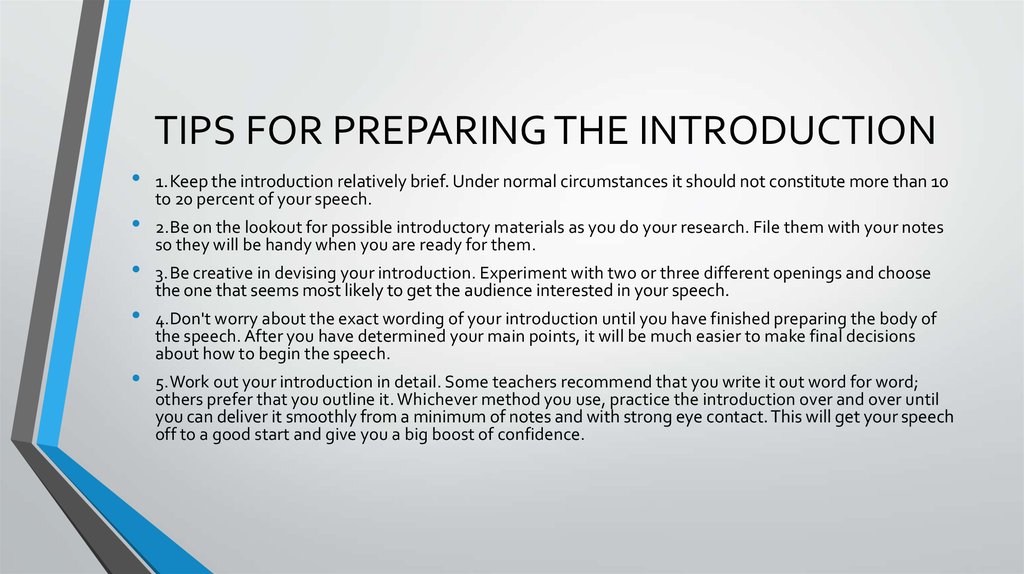

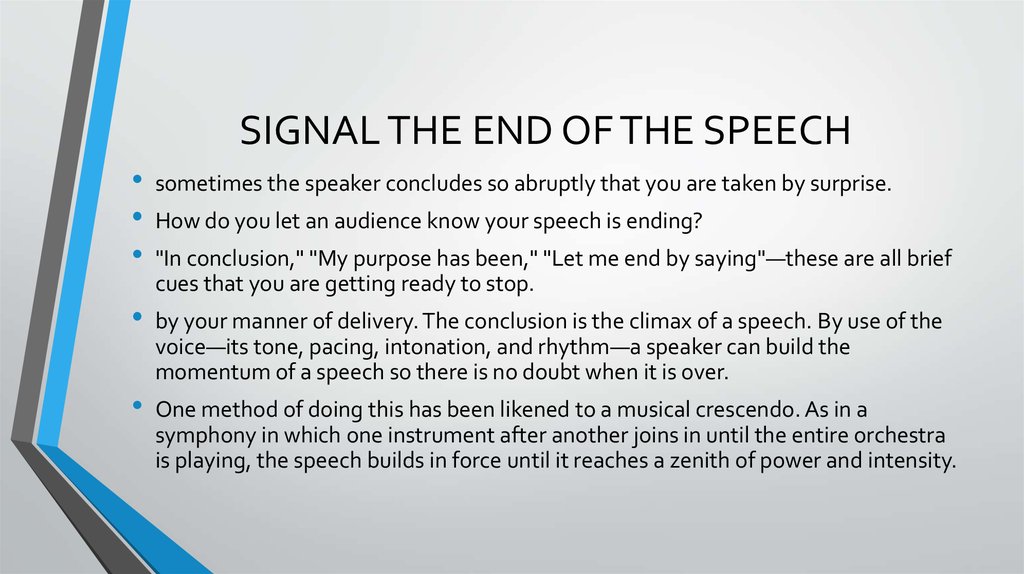



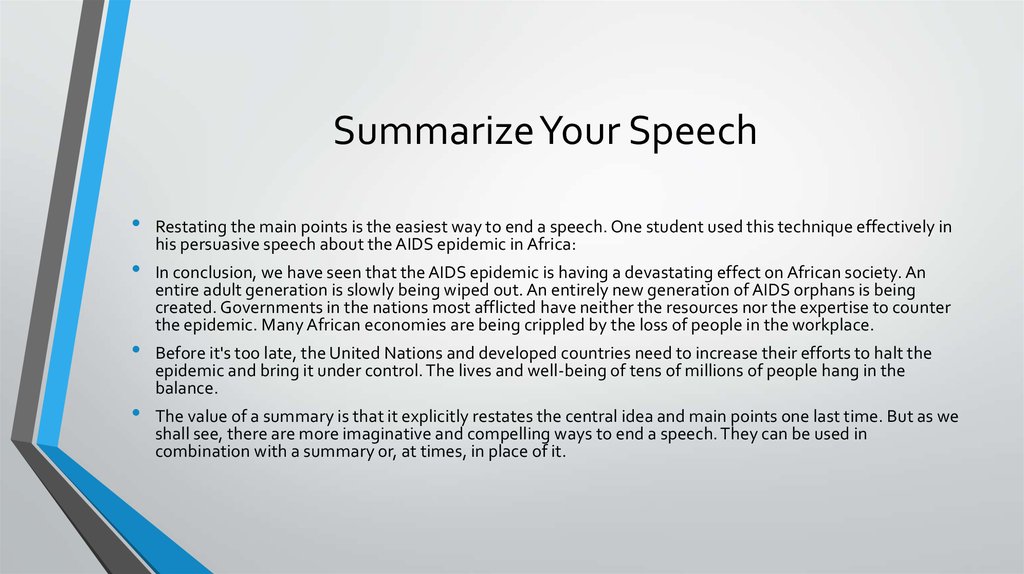



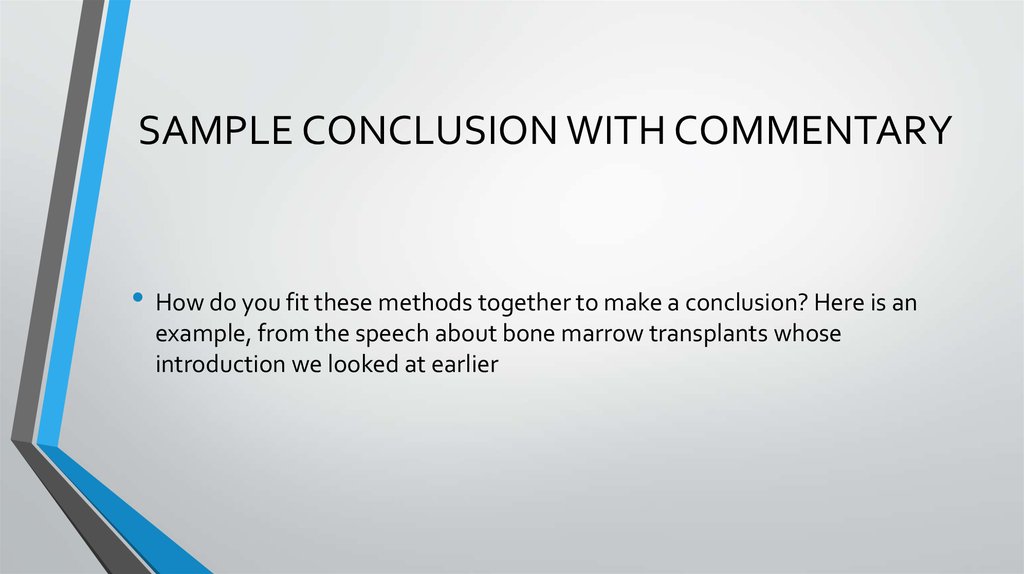



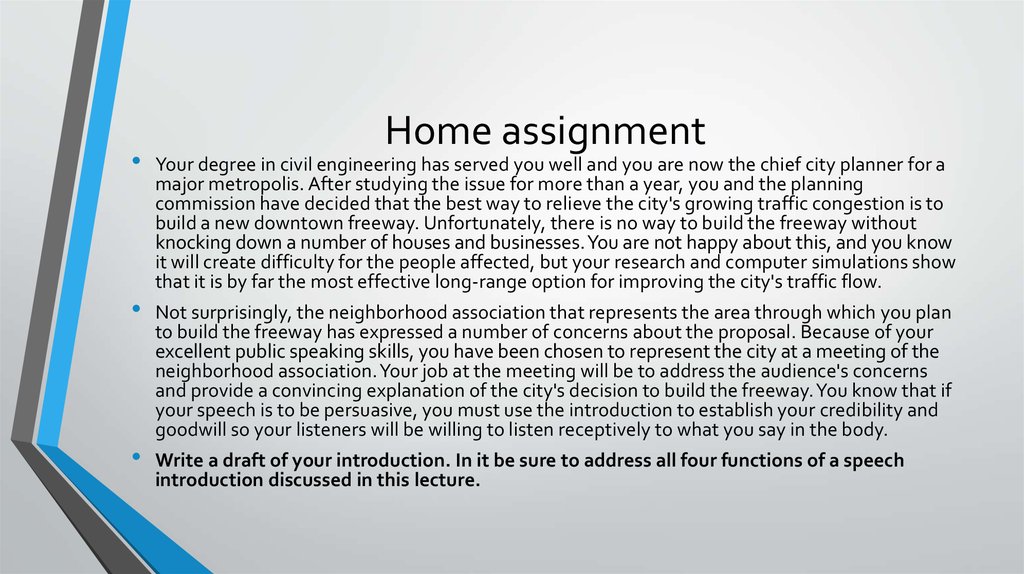
 english
english








